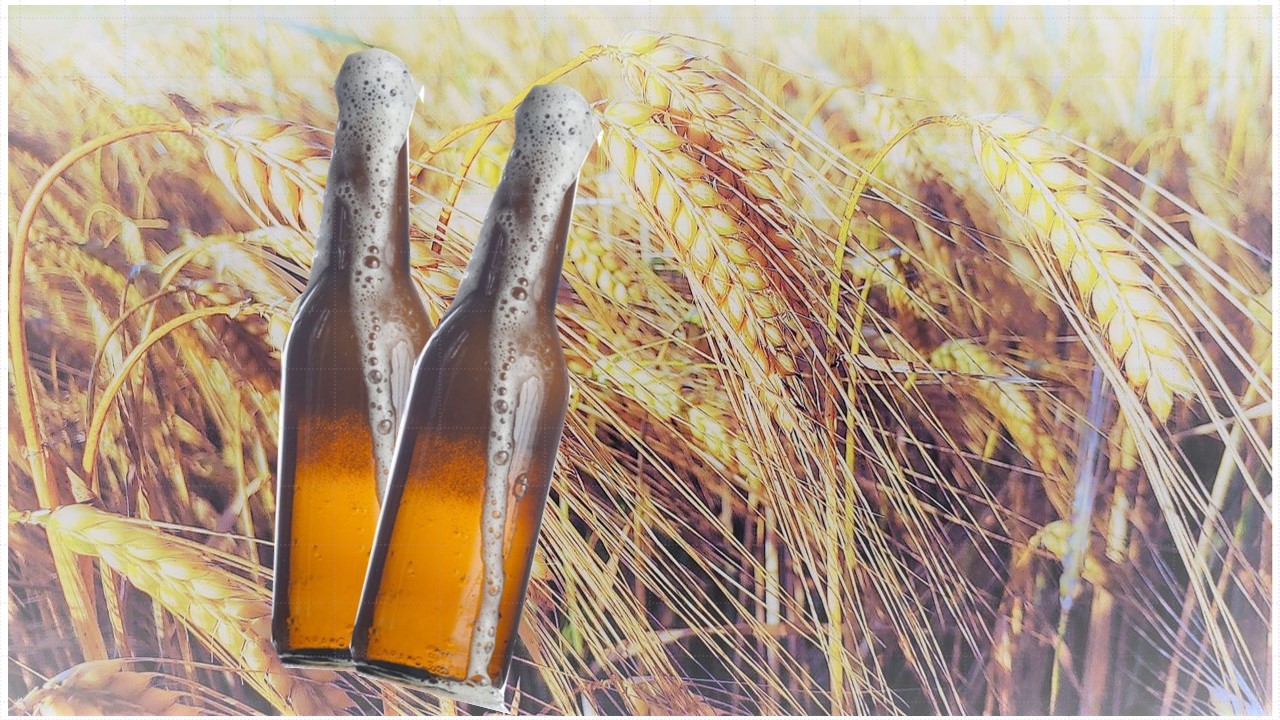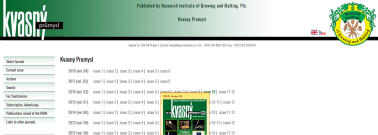Determination of gushing potential of barley
DOI:
https://doi.org/10.18832/kp2021.67.548Keywords:
barley, malt, gushing, MTC, germination stimulationAbstract
A new control method for the determination of the malting barley susceptibility to gushing was developed. The method is based on the modified Carlsberg test (MCT) after prior stimulation of barley with substances that promote the germination process. Barleys from the harvest of 2020 and malts produced from them were used to develop and verify the method. The selection of barleys was based on the results of gushing potential detected in the produced malts. To optimise and verify the method, the barley variety Sunshine with a high gushing potential of both barley (139±33 g) and malt (144±13 g), and the barley variety Pionier with zero gushing potential of both barley and malt were used. Malt was produced from the Lodestar barley variety with a high content of the mycotoxin deoxynivalenol. Gushing of the malt was 127±10 g. The gushing potential in barley was determined by the MCT method after prior stimulation of germination. For comparison, the gushing potential was also determined by the MCT method without stimulation of germination. It was proved that stimulation of germination is a key process for correct determination of the susceptibility of barley to gushing. The newly developed method was used for the determination of the gushing potential of five barleys from the harvests of 2020 and 2021. Control gushing determination of five malt samples was performed using the MCT method. An agreement between the measured data was found.
References
Aastrup, S. (2003). Gushing factors are already present in barley allowing early detection of gushing risk. In Proceedings of the European Brewery Convention Congress, Dublin (pp. 923–929). Nürnberg: Fachverlag Hans Carl.
Casey, G. P. (1996). Primary versus secondary gushing and assay procedures used to assess malt/beer gushing. MBAA Technical Quarterly, 33(4), 229–235.
Chrisitian, M., Titze, J., Ilberg, V., Jacob, F. (2010). Combined particle analysis as a new tool to predict gushing shown with alcohol-free beverage products. Brewing Science, 63, 72–79.
Christian, M., Titze, J., Ilberg, V., Jacob, F. (2011). Novel perspectives in gushing analysis: A review. Journal of the Institute of Brewing, 117(3), 295–313. https://doi.org/10.1002/j.2050-0416.2011.tb00474.x
Gjertsen, P. (1967). Gushing in beer; its nature, cause and prevention. Brewer’s Digest, 42, 80–84.
Gjertsen, P., Trolle, B., Andersen, K. (1963). Weathered barley as a contributory cause of gushing in beer. In Proceedings of the 9th Congress – European Brewery Convention, Brussels (pp. 320–341). Amsterdam: Elsevier.
Gjertsen, P., Trolle, B., Andersen, K. (1965). Gushing caused by microorganisms, specially Fusarium species. In Proceedings of the 10th Congres - European Brewery Convention, Stockholm (pp. 428–438). Amsterdam: Elsevier.
Kosař, K. (2010). 302041. Prague: Industrial Property Office of the Czech Republic.
Mastanjevic, K., Krstanovic, V., Mastanjevic, K., Sarkanj, B. (2018). Malting and brewing industries encounter Fusarium spp. related problems. Fermentation, 4(1), 1–15. https://doi.org/10.3390/fermentation4010003
Mastanjević, K., Mastanjević, K., Krstanović, V. (2017). The gushing experience—a quick overview. Beverages, 3(2), 25. https://doi.org/10.3390/beverages3020025
MEBAK. (2011). Raw materials: barley, adjuncts, malt, hops and hop products. In J. Fritz (Ed.), Collection of brewing analysis methods of the Mitteleuropäische Brautechnische Analysenkommission (MEBAK) (p. 341). Germany: Freising-Weihenstephan.
MEBAK. (2018). Raw materials: barley, adjuncts, malt, hops and hop products. In J. Fritz (Ed.), Collection of brewing analysis methods of the Mitteleuropäische Brautechnische Analysenkommission (MEBAK) (p. 341). Germany: Freising-Weihenstephan.
Munar, M. J., Sebree, B. (1997). Gushing—a maltster’s view. Journal of the American Society of Brewing Chemists, 55(3), 119–122. https://doi.org/10.1094/ASBCJ-55-0119
Piacentini, K. C., Běláková, S., Rocha, L. O., Savi, G. D., Benešová, K., Pernica, M., … Correa, B. (2021). Gushing phenomenon and gene Hyd5 from Fusarium species in barley samples from Brazil. Kvasny Prumysl, 67(2), 435–441. https://doi.org/10.18832/kp2021.67.435
Postulkova, M., Riveros-Galan, D., Cordova-Agiular, K., Zitkova, K., Verachtert, H., Derdelinckx, G., … Branyik, T. (2016). Technological possibilities to prevent and suppress primary gushing of beer. Trends in Food Science & Technology, 49, 64–73. https://doi.org/10.1016/j.tifs.2015.12.006
Sarlin, T., Nakari-Setala, T., Linder, M., Penttila, M., Haikara, A. (2005). Fungal hydrophobins as predictors of the gushing activity of malt. Journal of the Institute of Brewing, 111(2), 105–111. https://doi.org/10.1002/j.2050-0416.2005.tb00655.x
Schwarz, P. B., Beattie, S., Casper, H. H. (1996). Relationship between Fusarium infestation of barley and the gushing potential of malt. Journal of the Institute of Brewing, 102(2), 93–96. https://doi.org/10.1002/j.2050-0416.1996.tb00899.x
Shokribousjein, Z., Deckers, S., Gebruers, K., Lorgouilloux, Y., Baggerman, G., Verachtert, H., … Derdelinckx, G. (2011). Hydrophobins, beer foaming and gushing. Cerevisia: Belgian Journal of Brewing and Biotechnology, 35(4), 81–101. Retrieved from https://lirias.kuleuven.be/retrieve/143973$$DReview_Hydrophobins_beer_foaming_and_gushing_Cerevisia 2011.pdf
Specker, C., Niessen, L., Vogel, R. F. (2014). In vitro studies on the main beer protein Z4 of Hordeum vulgare concerning heat stability, protease inhibition and gushing. Journal of the Institute of Brewing, 120(2), 85–92. https://doi.org/10.1002/jib.118
Svoboda, Z., Mikulikova, R., Benesova, K., Belakova, S. (2019). The occurrence of the selected Fusarium mycotoxins in Czech malting barley, harvested in 2012–2017. Czech Journal of Food Sciences, 37(6), 439–445. https://doi.org/10.17221/317/2018-CJFS
Vaag, P., Riis, P., Knudsen, A. D., Pedersen, S., Meiling, E. (1993). A simple and rapid test for gushing tendency in brewing materials. In Proceedings of the 24th Congress - European Brewery Conventio (pp. 155–162). Oslo: IRL Press, Oxford.

Downloads
Published
How to Cite
Issue
Section
License
Copyright (c) 2021 Sylvie Běláková, Tomáš Foltýn

This work is licensed under a Creative Commons Attribution 4.0 International License.







